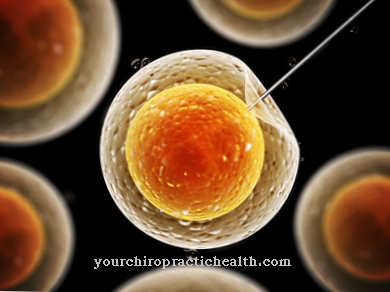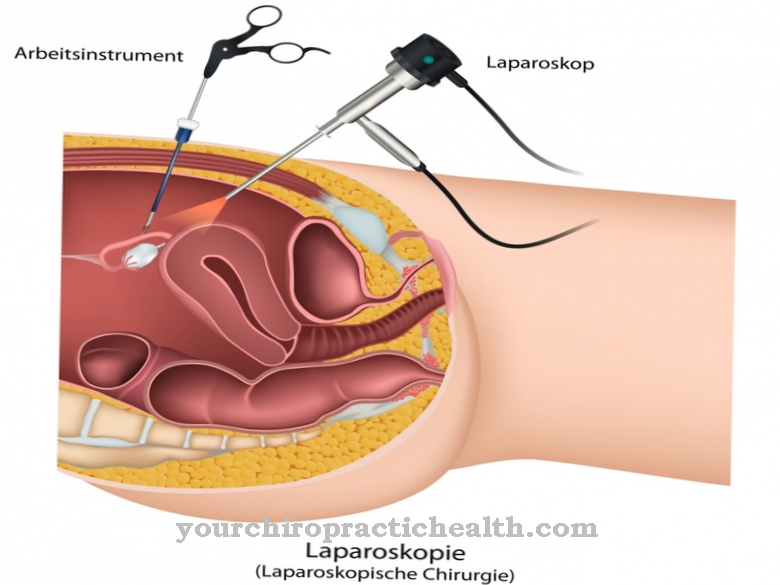anesthesia is a medical procedure with which the physical pain sensation and certain functions of the body are switched off. It is used to enable surgical interventions or diagnostic procedures to be carried out painlessly for the patient.
What is anesthesia?

There are different types of Anesthesia, the best known are general anesthesia (general anesthesia), local anesthesia (local anesthesia) and regional anesthesia (anesthesia of larger areas).
The term anesthesia comes from the Greek and is composed of the parts of the word an - without and aisthesis - sensation. Anesthesia creates insensibility and thus freedom from pain, either in the whole body or locally. The anesthesia is carried out by a specialist, the anesthetist.
Freedom from pain is achieved by administering medication, in the form of injections into the vein or into certain nerve tracts, or by administering anesthetic gases. With general anesthesia, complete loss of consciousness occurs, so that the patient does not notice the medical interventions; With local and regional anesthesia, the patient is awake but feels no pain.
Function, effect, application & goals
Anesthesia are always used when treatments or diagnostic tests would cause pain. This is the case with surgical interventions, with certain diagnostic procedures, with childbirth and in pain therapy.
Operations are performed under local or general anesthesia, depending on the extent and duration of the procedure. For diagnostics, anesthesia is used in procedures such as endoscopy (mirroring = inserting a camera into organs) or angiography (injection of contrast medium into the vessels of the heart). The course of births is made easier with the help of epidural anesthesia (PDA), since the anesthetic means that contractions are no longer felt.
But it is also used for caesarean sections to give the expectant mother the opportunity to experience the birth with consciousness. Finally, anesthesia is also used in the therapy of chronic pain conditions. By means of drug pumps inserted into the body, painkillers are permanently released into the body, which enable the patient to be free from pain.
General anesthesia or general anesthesia uses various drugs to switch off the sensation of pain in the whole body and puts the patient into complete unconsciousness. The components are pain relievers, numbing and relaxing substances. They prevent the pain, put the patient into a kind of deep sleep and let the muscles relax.
If longer interventions take place, a tube (ventilation hose) is inserted into the windpipe during general anesthesia in order to ensure sufficient breathing over the long term. During the operation, the anesthetist constantly checks the patient's body functions and regulates the strength of the anesthesia accordingly.
With local anesthesia, limited areas of the body are numbed in such a way that pain can no longer be perceived there. The patient remains conscious and the motor skills continue to function. If, for example, a wound on the hand has to be sewn, the doctor can use drugs to specifically numb the nerves that are responsible for the care and thus for the perception of this point. The dentist also uses local anesthesia when treating teeth by injecting the anesthetic only into the nerve of the affected tooth.
Regional anesthesia numb a larger area of the body than local anesthesia does. In epidural anesthesia, for example, the anesthetic is injected into the so-called epidural space and thus prevents the sensation of pain in the entire lower body region.
You can find your medication here
➔ Medicines for painDangers & Risks
With the most modern equipment and well-trained specialists, the dangers are with one anesthesia very little nowadays. After general anesthesia, hypersensitivity on the part of the patient can cause nausea and vomiting, but usually drugs are added to the anesthetics to prevent this side effect.
One possible risk with intubated anesthesia is improper positioning of the tube in the esophagus instead of the windpipe, but this is extremely rare and is usually noticed immediately. Aspiration of any stomach contents that may still be present represents a further danger. To avoid this, patients are not allowed to eat any more before anesthesia.
With local and regional anesthesia, bruises or infections at the injection site and allergic reactions can occur. Injuries to the nerves are possible and, rarely, cardiac arrhythmias or drop in blood pressure can occur.













.jpg)

.jpg)
.jpg)











.jpg)